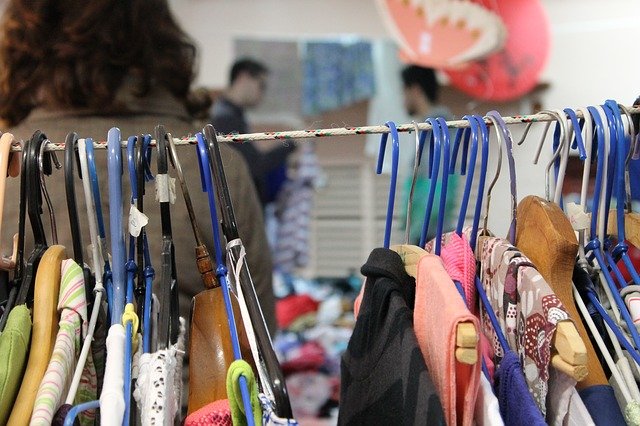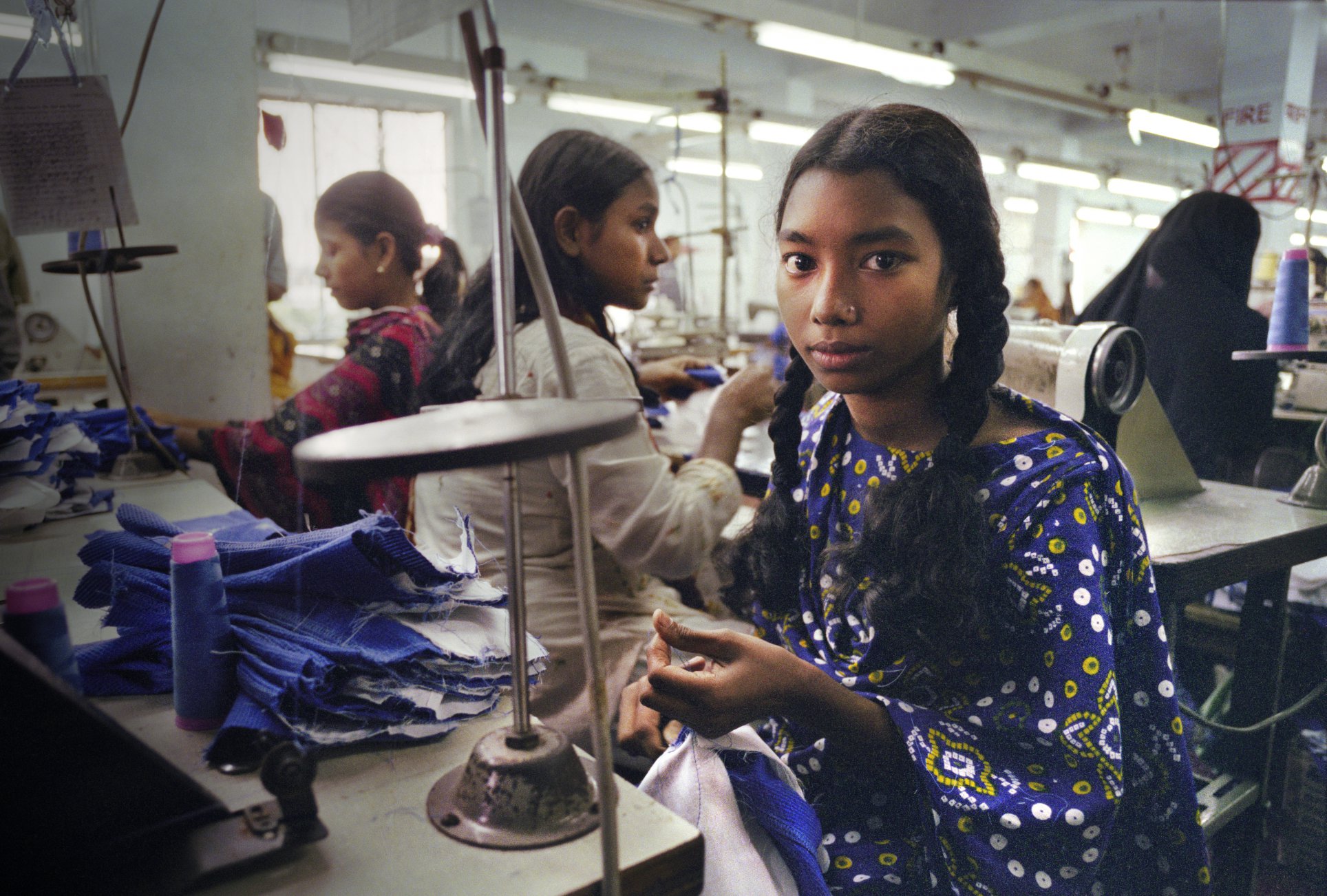Why I Stopped Buying New Clothes For Myself and My Children
Thrift Stores, Charity Shops, eBay, Garage Sales, Facebook Local Selling Groups. They all have one thing in common. They're a great place to bag a bargain. But did you know when you buy from these sources you are doing much more than saving money?

Image courtesy of Pixabay
When I say Thrift store or Charity shop, what is the image that is conjured up in your head? For many, they are seen as places where only those in desperate need of financial assistance go. Or perhaps you see that strange old lady from your neighborhood gleefully heading there in strange attire that is some kind of eclectic mix of clothing which pre-dates your own existence. The initial idea appeals to you but then you get that sinking feeling that you will become the victim of people watching and you skip right past and head out to buy something new from Top Shop instead.
When I first discovered the social, environmental and ethical destruction involved to produce new clothing I quickly started to look for better and more sustainable ways to keep me from exposing my family's birthday suits. It was either that or join a Naturist Village! ( I chose to avoid the latter option given the cold climate I live in.)
Did you know the average family in the USA spends about $1800 per year on new clothing, according to the Bureau of Labor Statistics? It may not seem like a huge amount compared to other bills, but if you were perhaps trying to save for a holiday or wanted to make a large purchase the money could be better spent elsewhere.
The marketing industry does a good job to make us feel that we need to have the latest garments. The sell comes when we are made to feel that if we don't buy we are missing out on something. They prey on our vulnerability to out-compete our peers. It is not by luck that they achieve this. It is a cold hard, marketing fact, first devised from brand sales tactics. A revelation made in Edward Bernay's book Crystallizing Public Opinion. Bernay cleverly uses psychological analysis to metaphorically grab the consumer by the balls. Written in 1923 the book has become almost a bible for large corporations. Like an open mouthed blue whale calmly sifting and soaking up the krill, anyone who reads and applies the ideals in this book, could in theory milk hundreds of dollars from people with the right business model.
Slave Labor and Children
Most new clothing is made using slave labor techniques and child labor is prolific in many countries where most of the clothing in the US and UK is sold. While these clothing corporations try to make us believe they are trying to drive prices down and hiring cheap labor is their excuse, it is more about increasing their profit while trying to appease the consumer. It is estimated that 250 million children aged between 5 and 14 are working under forced labor conditions in sweatshops. Many of those children's meager wages barely provide enough for them to buy food. Whilst I understand there are two arguments on the table about this, both situations are a bad hand dealt to those in poverty stricken countries. It is completely immoral and irresponsible to exploit those less fortunate than us.

Environmental Cost of Producing New Textiles For Clothing

Image courtesy of Pixabay
Large textile factories are the second biggest pollutant producers in the world. They use alarming amounts of water which is then reintroduced to various waterways. It contains contaminants that are harmful to almost all biological life. Next there is the air pollution from the processing of chemical treatments, application of fire retardant technologies and general manufacturing process. The smoggy steam released from these factories is often laden with chemicals which are again usually toxic to biological life. Solid waste is also a growing concern for these factories. The whole process is just wrong. When you consider we are literally poisoning ourselves for fashion, it completely defies logic.
How To Shop For Used Clothing and Still Look 'Normal' In Your New Old Garments
If you have some spare time, head on down to your local thrift or charity store. Browsing takes time, but I've found some crazy bargains. Most of the stuff I've discovered looks relatively new. My own sense of fashion is a mix of hippie/ boho and 90's grunge. (Yes I never grew out of it and I'm rather grateful that fashioned is always subsequently recycled every 15 to 20 years or so).
My two youngest children, both boys, regularly camouflage themselves in a mixture of mud, grass clippings, pen and paints. For them I often find eBay is the best place with many people offering up large bundles of the age range you're looking for at a really reasonably price. A word of caution tho... eBay can be addictive and sometimes your basket gets a little overloaded. How many pairs of pants do two small boys really need anyway? The great thing about having kids that are close in age is that the clothes that survive the stress of active children can be handed down to the next child. It won't scar them for life or make them feel inadequate as the child that received the hand-me-downs as they understand that the sweater they are adorning previously belonged to someone else before making it's way into our household. Trust me on this.
Have you ever heard of a jumble sale? It's a bit of a British thing of times gone by, but nonetheless some places still do them. The island where I live holds them regularly and it's a bit of an insider's joke that we all clothes swap here.
Classified ads, Facebook groups selling various stuff are all ways you can find decent and hardly worn pre loved clothing.
The trick is to look.

My boys sporting their used clothes.
What Do You Do With Your Used Clothes When You've No Longer Need Them?
There are plenty of good uses for your used clothing when you're done with it. Here's a quick list of a few of the things I do:
- Send them to a clothing bank or collection to be used to help those in need.
- If it's too old to be worn again, try cutting it up and use to clean your home.
- If you're feeling handy with needle and thread you could always make patchwork art, or even create a whole new outfit.
- Box them up and send to a collection depot that provides food and clothing for refugees. If you live in Europe, here's a handy link to a place named France and Beyond Refugee Aid that accepts clothing donations for refugees. They help out at camps across Europe, Syria and more.
- Sell them on. If you need a few extra bucks in your pocket it won't make you a millionaire but might just pay for your next bargain.
Recycling has never been more important than it has currently become. Wearing Pre-Loved clothing doesn't have to be strange or out of place. The feeling you get from knowing that you haven't contributed to any further destructive impact on this planet is worth it.
I'd love to know if anyone else is sporting used clothing. Let me know in the comments.
You got a 21.43% upvote from @brandonfrye courtesy of @holisticmom!
Want to promote your posts too? Send a minimum of .10 SBD or Steem to @brandonfrye with link in the memo for an upvote on your post. You can also delegate to our service for daily passive earnings which helps to support the @minnowfund initiative. Learn more here
Really good reasons to reuse and recycle, including clothes. I also like to 'upcycle' clothes and fabrics into new garments.
@bananamemos, thank you. It is something that I am really passionate about. I'm glad that you upcycle. I'd love to see a post about your creations. 😊 Have a lovely day.